Business > EXAM > ACQ 202 Module 3 Part 2 Test( Questions And Answers) With Complete Solution. (All)
ACQ 202 Module 3 Part 2 Test( Questions And Answers) With Complete Solution.
Document Content and Description Below
ACQ 202 Mod 3 Part 2 Test contains 17 Questions An approach which employs specifications and standards that have been widely adopted by industry for selected system interfaces. An appro... ach that favors Government control of detailed designs to manage a program. An approach that prefers the contractor's proprietary unique interface standards third party certification. An approach that requires industry to comply with military specifications and standards. Helping IPT members to understand the interrelationship of components without physically changing the system. Eliminating technical risk before production begins. Quickly providing physical solutions to meet functional capabilities. Providing designs that will consistently exceed functional capabilities. Systems Engineering Technical Performance Measurement Configuration Management Test and Evaluation Supportabili ty Maintainabili ty Producibilit y Reliabilit y 5) Which Systems Engineering tool would be used to describe the products to be developed under the terms of the contract? [Identify the role of the Work Breakdown Structure (WBS) in the systems engineering process.] Work Breakdown Structure (WBS) Trade Study Technical Performance Measurement (TPM) Modeling and Simulation 6) One of the benefits of using redundant back-up systems is: [Identify life cycle product support resource requirements and understand why it is important to influence system design for supportability.] Increased reliability Increased transportability Increased size and weight Increased number of parts Serve as a tool to mitigate risk. Track the effects of changes to the CDD. Serve as a record for configuration management. Test the feasibility of the Work Breakdown Structure. 8) Simulation Based Acquisition involves the integration of across functional disciplines throughout the acquisition process. [Identify the role of modeling and simulation in the defense acquisition process.] Modeling and Simulation Commercial products Trade Studies Configuration Management Level of Repair Analysis (LORA) Failure Modes and Effects Criticality Analysis (FMECA) Preventive Maintenance Reliability Centered Maintenance (RCM) 10) Reliability is how long an item or system will perform its function before it breaks. Good reliability will . [Identify the relationship of Reliability, Availability, and Maintainability (RAM) and Supportability to life cycle product support, and its impact on system performance, operational effectiveness (including support), logistics planning, and life-cycle cost.] Decrease logistics support requirements Increase life cycle sustainment costs Increase manpower waste Decrease system readiness Product Support Analysis (PSA) Reliability Centered Maintenance (RCM) An In-Service Review (ISR) A Full-Up Systems-Level (FUSL) test 13) In accordance with DoD acquisition policy and guidance, every program should consider, at a minimum, open systems architecture, human systems integration, . [Identify the key policy provisions that relate to how life cycle product support and systems engineering is performed in the Department of Defense.] Reliability, availability, and maintainability Profit margin Return on investment Return on assets 14) In the process of conducting design considerations, a program's systems engineers are deciding from among Components A, B, and C. All three components meet performance requirements. Component C has the highest initial cost; however, due to its superior reliability, it is projected to lead to lower life cycle costs than Components A and B in the long run, and this will help meet the program's affordability goals. This is adequate justification for the team to select Component C. [Apply the systems engineering process to determine a design solution to meet an operational need that demonstrates the balancing of Affordability objectives and technical activities.] True Fals e Option 1 is better than Option 2 because its total weighted score is higher. Option 2 is better than Option 1 because its total weighted score is higher. Option 2 is better than Option 1 because its total weighted score is lower. Option 1 and Option 2 each score a total of 2.5, therefore, either choice is fine. 16) One of the main purposes of the portion of the PSA process is to relate design, operational, and supportability characteristics to system readiness objectives and goals. [Relate design, operational, and supportability characteristics to system readiness objectives.] Analysis of product support Assessment and verification Manpower and personnel readiness Operational assessment Decision matrix Least squares regression analysis Delphi technique Parametric modeling 1) A strategy that adopts interface standards that are defined by and widely used throughout industry to facilitate the update of components with new technology is . [Identify key acquisition best practices, including commercial practices that impact the relationship between Government and industry.] Open systems Software-embedded systems Automated Information Systems Non-developmental items It ensures the lowest possible production cost and shortest program schedule. It is iteratively applied throughout a system's development. It is fundamentally a problem solving process. It addresses issues like supportability and interoperability using the Integrated Product and Process Development (IPPD) process. Fals e True 5) Tracking Technical Performance Measures on high-risk components should provide: [Use Technical Performance Measures to track progress in program risk areas during systems development.] Early warning signs of potential performance problems A baseline for preparing the technical Statement of Work A product and process oriented framework for the Work Breakdown Structure Detailed program cost and schedule data Maintenance Task Analysis (MTA) Failure Modes, Effect and Criticality Analysis (FMECA) Level of Repair Analysis (LORA) Fault Tree Analysis (FTA) 7) Using one of many Product Support Analysis tools, is a tool that examines each failure to determine and classify its effect on the entire system. [Select appropriate management methods and techniques to achieve Reliability, Availability, and Maintainability (RAM) and Supportability parameters.] Failure Modes and Effects Criticality Analysis (FMECA) Reliability Centered Maintenance (RCM) Test, Analyze, Fix, and Test (TAFT) Mean Down Time (MDT) 8) During the Operational Test (OT) effort, the purpose of validation is to determine . [Identify how Test and Evaluation (T&E) supports the systems engineering process.] Whether or not we have "built the right thing" The maximum capabilities of a system achievable under unrealistic operating conditions The type and quantity of critical technical parameters to be monitored The number of test units and test ranges required for all test events 9) When using a decision matrix, after you identify all the options, what is the next step? [Apply a selective quantitative tool (e.g., decision matrix) to support a decision.] Establish the criteria that will be used to rate the options. Establish the rating scheme. Give each criterion a weight. Multiply each rating by the assigned weight. 10) A decision matrix can be used to quantifiably compare alternatives when conducting the tradeoff process to create a supportable design that is also producible, testable, and . [Apply a tradeoff study process to evaluate alternatives.] Affordabl e l e art Fina Uniqu State-of-the- 1) Which of the following BEST describes the "Open System" design An approach which employs specifications and standards that have been widely adopted by industry for selected system interfaces. An approach that favors Government control of detailed designs to manage a program. An approach that prefers the contractor's proprietary unique interface standards third party certification. An approach that requires industry to comply with military specifications and standards. 2) An engineer is designing a new system to transport hazardous material across rough terrain. He wants input from experts on supportability and producibility before he builds a physical model of the system. What tool might he use to evaluate various technical approaches to achieve a balanced design? [Recognize the importance of modeling and simulation as a tool in the systems engineering process.] Virtual prototyping Technical Performance Measures Engineering Change Proposals Configuration management 3) What problem-solving process is used within an Integrated Product and Process Development (IPPD) management process to provide a design that balances capability needs? [Identify the role of systems engineering in balancing cost, schedule and performance throughout the life cycle.] Systems Engineering Technical Performance Measurement Configuration Management Test and Evaluation 4) The capability of a system design to support operations and readiness at an affordable cost throughout the system's life is best described as . [Identify the role of life cycle product support and systems engineering in balancing cost, schedule and performance throughout the life cycle.] Supportabili ty Maintainabili ty Producibilit y Reliabilit y 5) Which Systems Engineering tool would be used to describe the products to be developed under the terms of the contract? [Identify the role of the Work Breakdown Structure (WBS) in the systems engineering process.] Work Breakdown Structure (WBS) Trade Study Technical Performance Measurement (TPM) Modeling and Simulation 6) One of the benefits of using redundant back-up systems is: [Identify life cycle product support resource requirements and understand why it is important to influence system design for supportability.] Increased reliability Increased transportability Increased size and weight Increased number of parts 7) One of the primary purposes of Technical Performance Measures is to: [Use Technical Performance Measures to track progress in program risk areas during systems development.] Serve as a tool to mitigate risk. Track the effects of changes to the CDD. Serve as a record for configuration management. Test the feasibility of the Work Breakdown Structure. 8) Modeling and Simulation is a risk management tool that we use: [Identify the role of modeling and simulation in the defense acquisition process.] In virtually all phases of the acquisition life cycle. Primarily in early development to support the Analysis of Alternatives. Exclusively for mature designs that will be produced in quantity. To avoid conducting developmental and operational testing. 9) Which of the following supportability analysis tools is used for defense planning and performed to determine the best, most efficient location where an item can be repaired? [Identify Product Support Analyses (PSA) tools/best practices/techniques available in the systems engineering process to achieve the principal goals of supportability analyses.] Level of Repair Analysis (LORA) Failure Modes and Effects Criticality Analysis (FMECA) Preventive Maintenance Reliability Centered Maintenance (RCM) 10) Availability is the key to system readiness. One of the contributors to system downtime is . [Identify the relationship of Reliability, Availability, and Maintainability (RAM) and Supportability to life cycle product support, and its impact on system performance, operational effectiveness (including support), logistics planning, and life- cycle cost.] Administrative delays caused by personnel or paperwork Due to having all parts on hand before starting maintenance The ease with which the required repair can be made by the technician The ease with which the part can be viewed and accessed by the technician 11) The concept of is used to address the interplay between system performance, availability (reliability, maintainability, and supportability), process efficiency, and system life cycle cost. [Select appropriate management methods and techniques to achieve Reliability, Availability, and Maintainability (RAM) and Supportability parameters.] Affordable System Operational Effectiveness (ASOE) Reliability Centered Maintenance (RCM) Test, Analyze, Fix, and Test (TAFT) Level of Repair Analysis (LORA) 13) In accordance with DoD acquisition policy and guidance, every program should consider, at a minimum, open systems architecture, human systems integration, . [Identify the key policy provisions that relate to how life cycle product support and systems engineering is performed in the Department of Defense.] Reliability, availability, and maintainability Profit margin Return on investment Return on assets 14) In the process of conducting design considerations, a program's systems engineers are deciding from among Components A, B, and C. All three components meet performance requirements. Component C has the highest initial cost; however, due to its superior reliability, it is projected to lead to lower life cycle costs than Components A and B in the long run, and this will help meet the program's affordability goals. This is adequate justification for the team to select Component C. [Apply the systems engineering process to determine a design solution to meet an operational need that demonstrates the balancing of Affordability objectives and technical activities.] Fals e True 15) When using a decision matrix, after you identify all the options, what is the next step? [Apply a selective quantitative tool (e.g., decision matrix) to support a decision.] Establish the criteria that will be used to rate the options. Establish the rating scheme. Give each criterion a weight. Multiply each rating by the assigned weight. Product Support Analyses Earned Value Management Technical Performance Measures Parametric Cost Estimating 17) A decision matrix can be used to quantifiably compare alternatives when conducting the tradeoff process to create a supportable design that is also producible, testable, and . [Apply a tradeoff study process to evaluate alternatives.] Affordabl e l e art Fina Uniqu State-of-the- Virtual Prototypes Technical Performance Measure Performance Measurement Baseline Technical Review 2) The Systems Engineering Process primarily is used by acquisition management to manage technical risk, but it can also help to reduce program cost and schedule risk. [Identify the role of systems engineering in balancing cost, schedule and performance throughout the life cycle.] Fals e True 3) Capabilities related to the support and operation of a system should be considered early and continuously in the design and development of a system. [Identify the role of life cycle product support and systems engineering in balancing cost, schedule and performance throughout the life cycle.] Fals e True 4) Which of the following supportability analysis tools relies on scheduled maintenance to spot a failure before it impacts system effectiveness? [Identify Product Support Analyses (PSA) tools/best practices/techniques available in the systems engineering process to achieve the principal goals of supportability analyses.] Reliability Centered Maintenance (RCM) Failure Modes, Effects and Criticality Analysis (FMECA) Level of Repair Analysis (LORA) Test, Analyze, Fix and Test (TAFT) 1) Ultimately, the use of open systems design is expected to result in lower life cycle costs. [Identify key acquisition best practices, including commercial practices that impact the relationship between Government and industry.] Fals e True 2) An engineer is designing a new system to transport hazardous material across rough terrain. He wants input from experts on supportability and producibility before he builds a physical model of the system. What tool might he use to evaluate various technical approaches to achieve a balanced design? [Recognize the importance of modeling and simulation as a tool in the systems engineering process.] Virtual prototyping Technical Performance Measures Engineering Change Proposals Configuration management 3) Which is NOT TRUE about Systems Engineering? [Identify the role of systems engineering in balancing cost, schedule and performance throughout the life cycle.] It ensures the lowest possible production cost and shortest program schedule. It is iteratively applied throughout a system's development. It is fundamentally a problem solving process. It addresses issues like supportability and interoperability using the Integrated Product and Process Development (IPPD) process. 4) Capabilities related to the support and operation of a system should be considered early and continuously in the design and development of a system. [Identify the role of life cycle product support and systems engineering in balancing cost, schedule and performance throughout the life cycle.] Fals e True 5) Which Systems Engineering tool would be used to describe the products to be developed under the terms of the contract? [Identify the role of the Work Breakdown Structure (WBS) in the systems engineering process.] Work Breakdown Structure (WBS) Trade Study Technical Performance Measurement (TPM) Modeling and Simulation 6) Three critical factors in achieving maximum Operational Availability (AO) are: [Identify life cycle product support resource requirements and understand why it is important to influence system design for supportability.] Reliability, maintainability and supportability Transportability, survivability and affordability Vulnerability, interoperability and simplicity Viability, deniability and versatility 7) Technical Performance Measures should be selected for those parameters that: [Use Technical Performance Measures to track progress in program risk areas during systems development.] Are expected to have the highest degree of risk. Will not be addressed at technical design reviews. Are expected to exceed the objectives contained in the Capability Development Document (CDD). Will not be subjected to formal test and evaluation. 8) Modeling and simulation, when properly planned for and implemented, has been shown to (Select all that apply): [Identify the role of modeling and simulation in the defense acquisition process.] Help make better decisions Increase technical risk Shorten program schedules Improve system quality 9) Which of the following supportability analysis tools relies on scheduled maintenance to spot a failure before it impacts system effectiveness? [Identify Product Support Analyses (PSA) tools/best practices/techniques available in the systems engineering process to achieve the principal goals of supportability analyses.] Reliability Centered Maintenance (RCM) Failure Modes, Effects and Criticality Analysis (FMECA) Level of Repair Analysis (LORA) Test, Analyze, Fix and Test (TAFT) 10) Availability is the key to system readiness. One of the contributors to system downtime is . [Identify the relationship of Reliability, Availability, and Maintainability (RAM) and Supportability to life cycle product support, and its impact on system performance, operational effectiveness (including support), logistics planning, and life- cycle cost.] Administrative delays caused by personnel or paperwork Due to having all parts on hand before starting maintenance The ease with which the required repair can be made by the technician The ease with which the part can be viewed and accessed by the technician 11) Using one of many Product Support Analysis tools, is a tool that examines each failure to determine and classify its effect on the entire system. [Select appropriate management methods and techniques to achieve Reliability, Availability, and Maintainability (RAM) and Supportability parameters.] Failure Modes and Effects Criticality Analysis (FMECA) Reliability Centered Maintenance (RCM) Test, Analyze, Fix, and Test (TAFT) Mean Down Time (MDT) Engineering tool Schedule tool Cost-reduction tool Design analysis tool 13) In accordance with DoD acquisition policy and guidance, every program should consider, at a minimum, open systems architecture, human systems integration, . [Identify the key policy provisions that relate to how life cycle product support and systems engineering is performed in the Department of Defense.] Reliability, availability, and maintainability Profit margin Return on investment Return on assets 14) If three alternatives are equal in terms of initial cost and meeting performance requirements, the systems engineers should select the one that will result in the lowest life cycle costs. [Apply the systems engineering process to determine a design solution to meet an operational need that demonstrates the balancing of Affordability objectives and technical activities.] Fals e True 15) When using a decision matrix, after you identify all the options, what is the next step? [Apply a selective quantitative tool (e.g., decision matrix) to support a decision.] Establish the criteria that will be used to rate the options. Establish the rating scheme. Give each criterion a weight. Multiply each rating by the assigned weight. 16) One of the main purposes of the portion of the PSA process is to relate design, operational, and supportability characteristics to system readiness objectives and goals. [Relate design, operational, and supportability characteristics to system readiness objectives.] Analysis of product support Assessment and verification Manpower and personnel readiness Operational assessment Decision matrix Least squares regression analysis Delphi technique Parametric modeling 1) During the Developmental Test (DT) effort, the purpose of verification is to determine . [Identify how Test and Evaluation (T&E) supports the systems engineering process.] Whether or not the system meets its "build to" specifications Solutions to any unplanned technical issues that may arise Appropriate technical performance measures for a program The needed capabilities to reduce the program's technical risk 2) A decision matrix is a useful tool when applying the tradeoff study process to analyze alternatives. [Apply a tradeoff study process to evaluate alternatives.] Fals e True [Show More]
Last updated: 1 year ago
Preview 1 out of 23 pages
 (1).png)
Buy this document to get the full access instantly
Instant Download Access after purchase
Add to cartInstant download
We Accept:

Reviews( 0 )
$16.00
Document information
Connected school, study & course
About the document
Uploaded On
Mar 10, 2022
Number of pages
23
Written in
Additional information
This document has been written for:
Uploaded
Mar 10, 2022
Downloads
0
Views
215

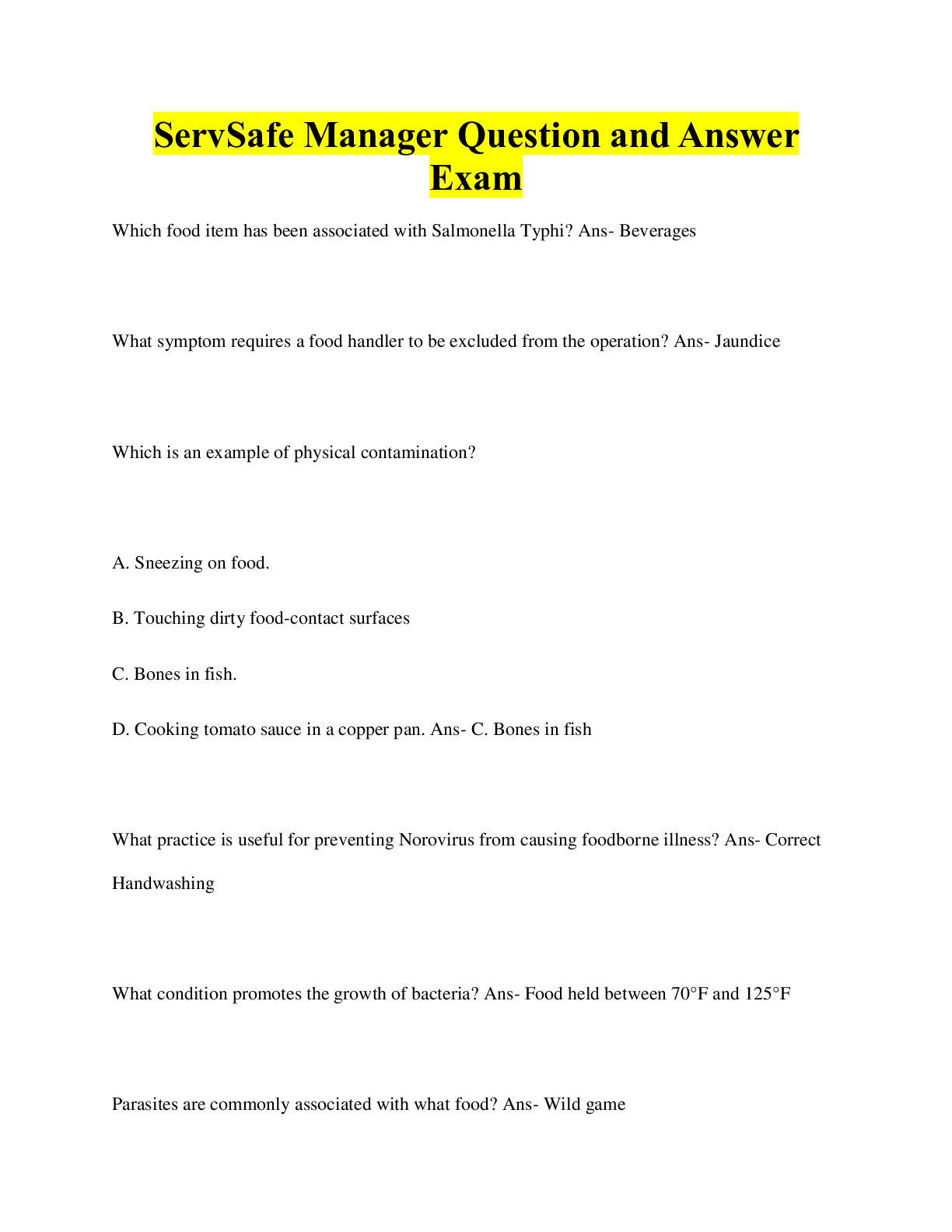
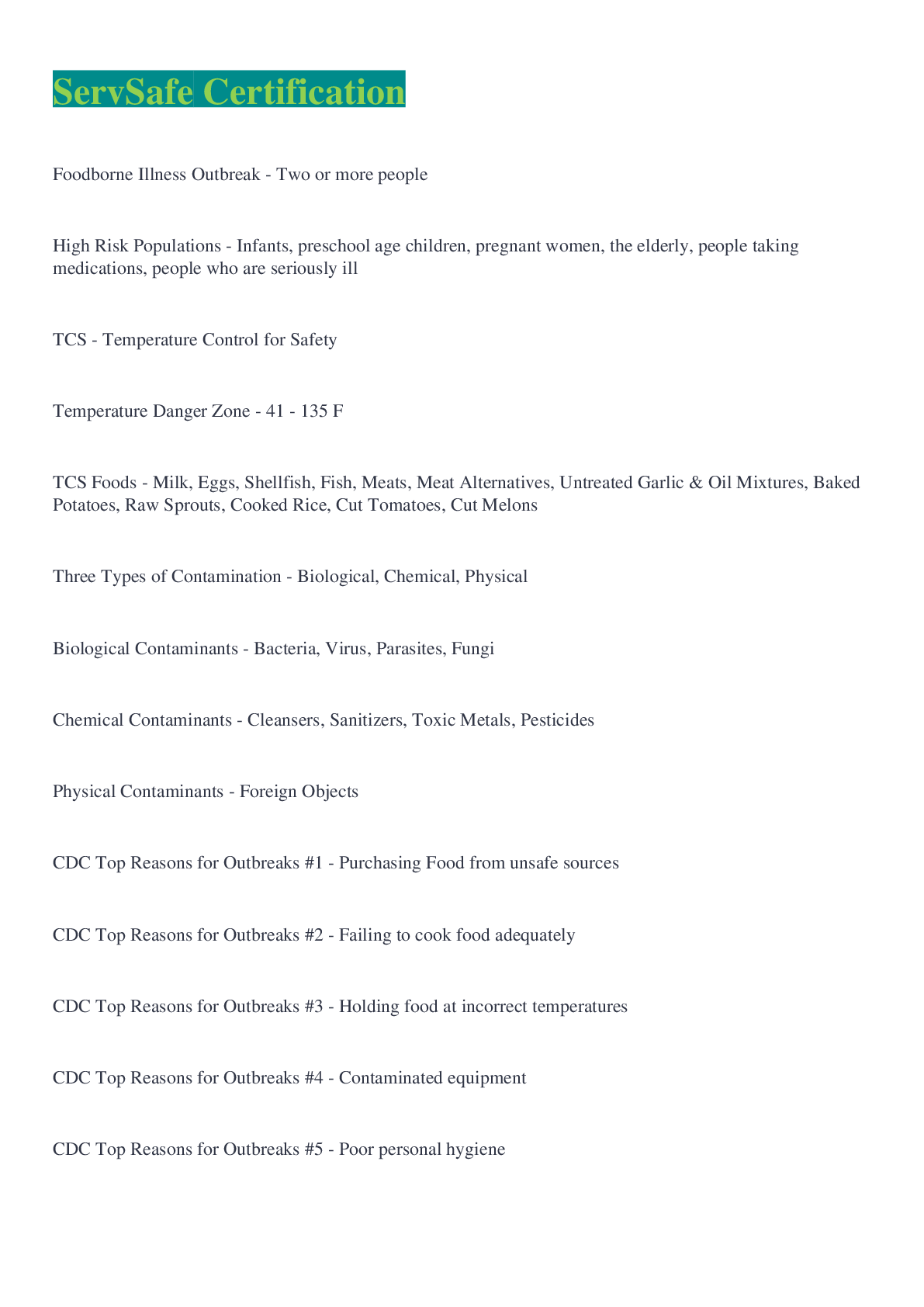

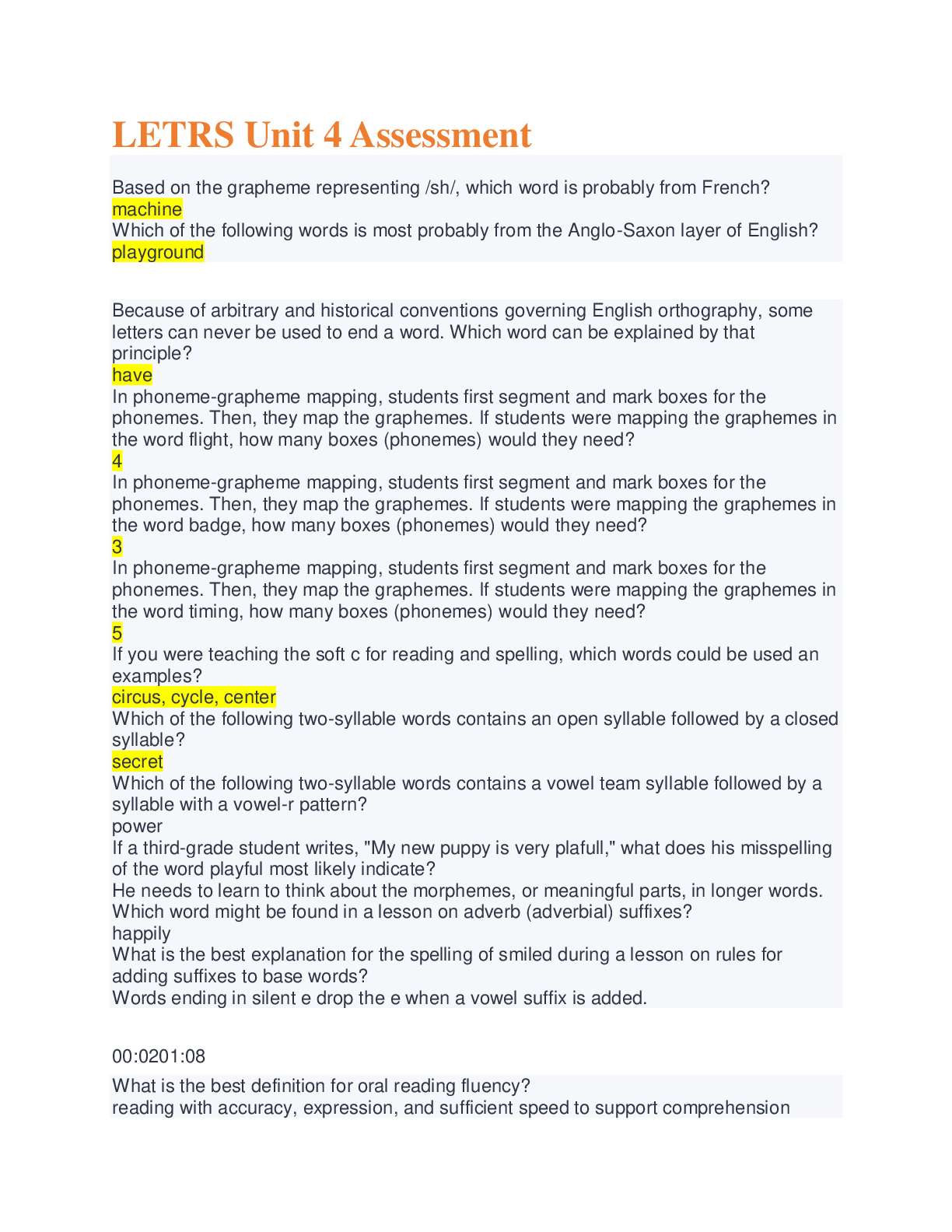


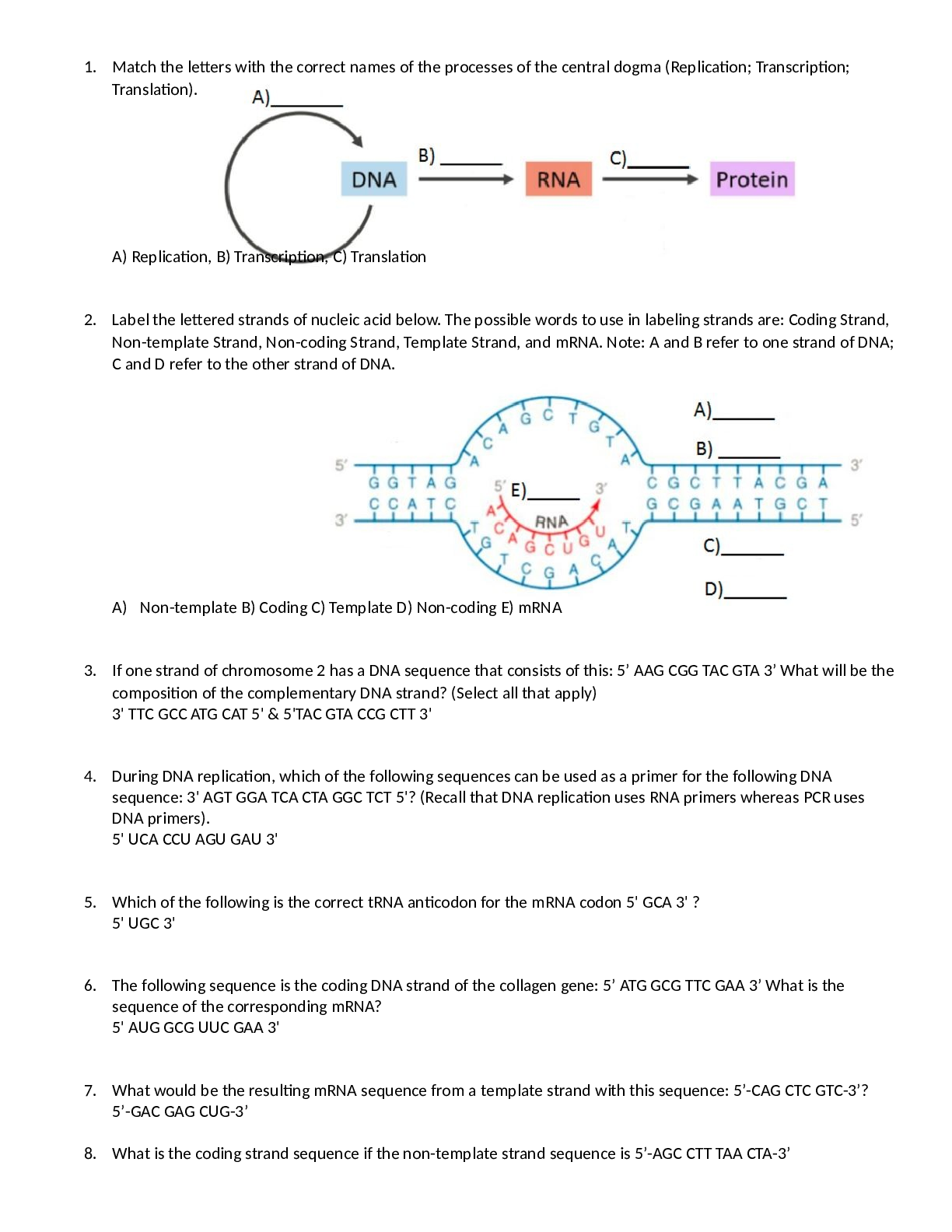

.png)
.png)
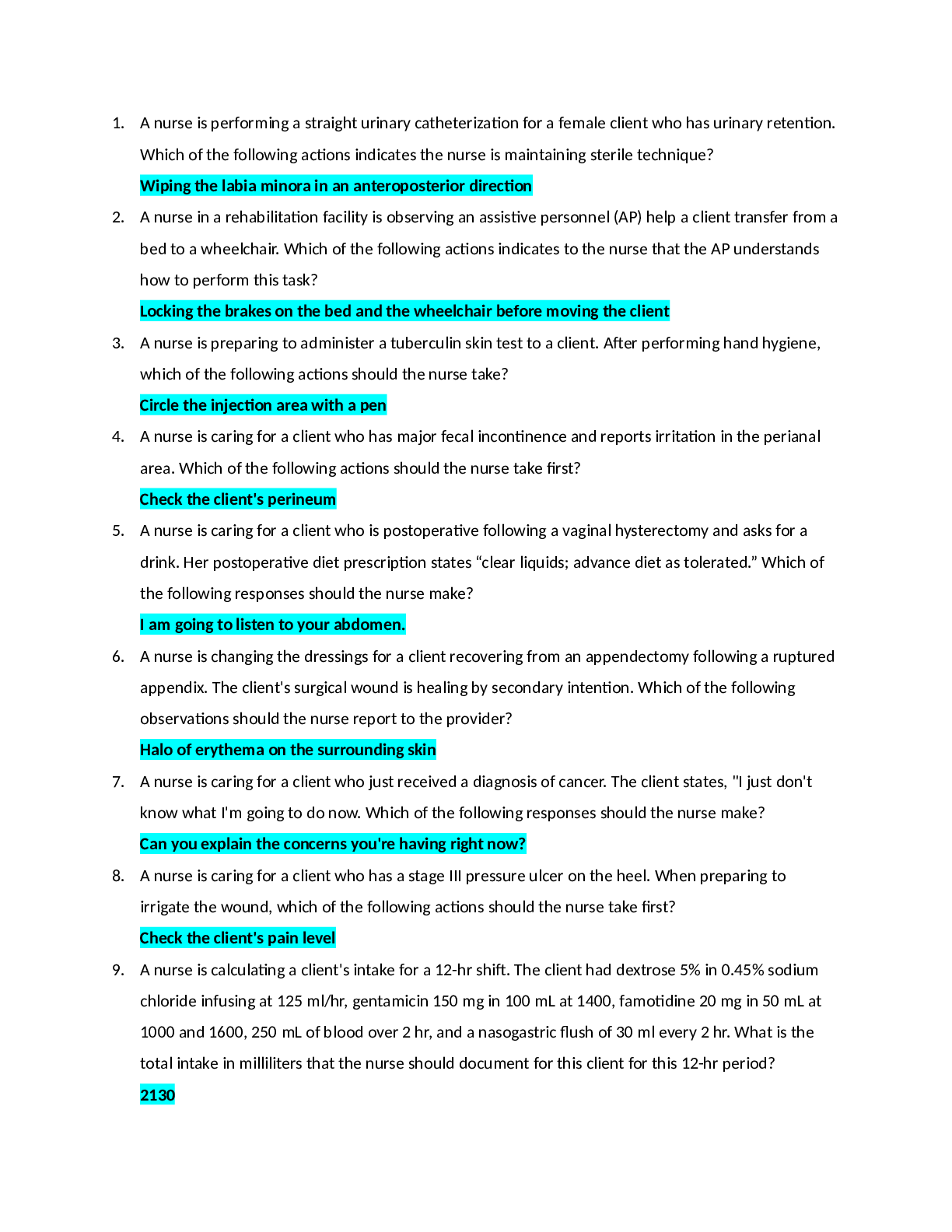
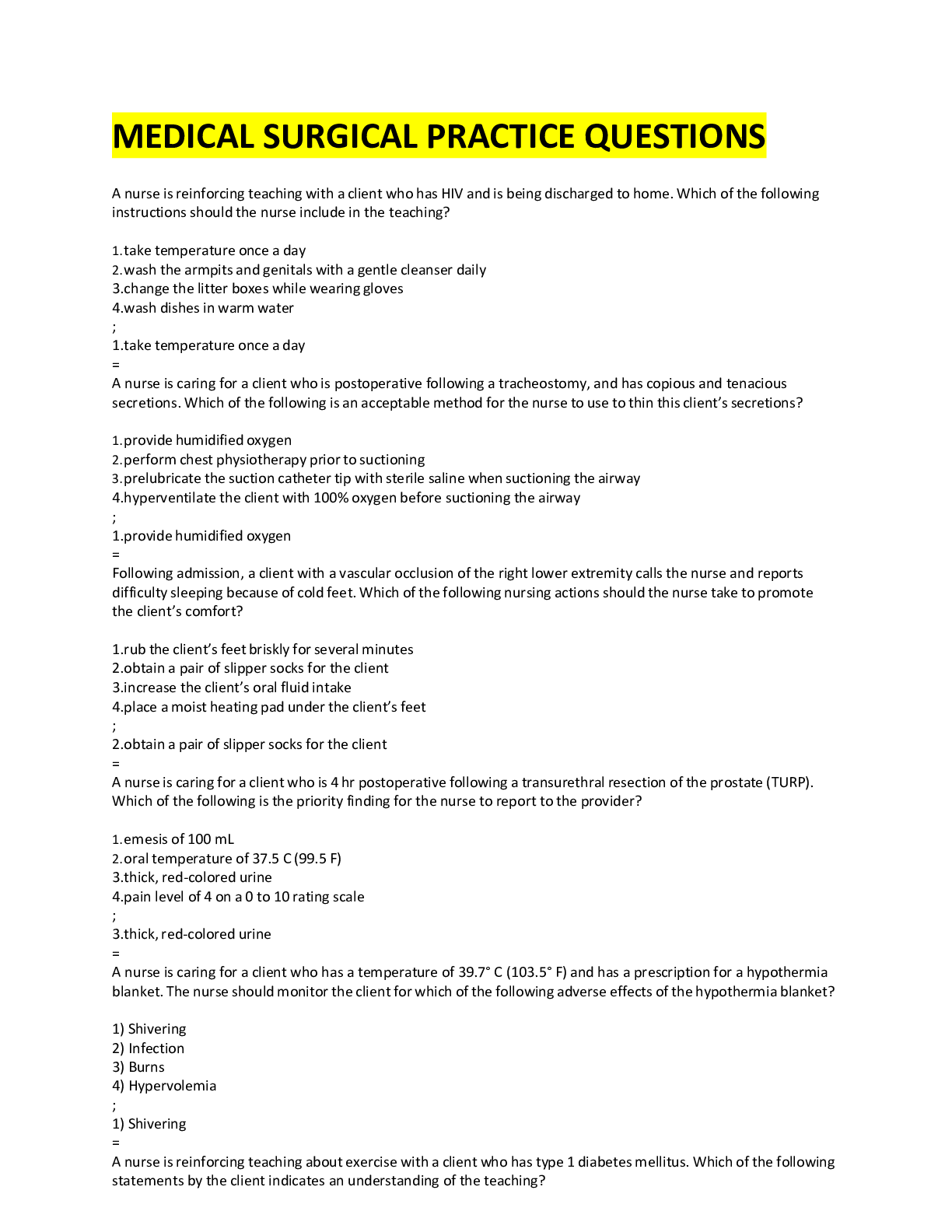
 (1).png)



